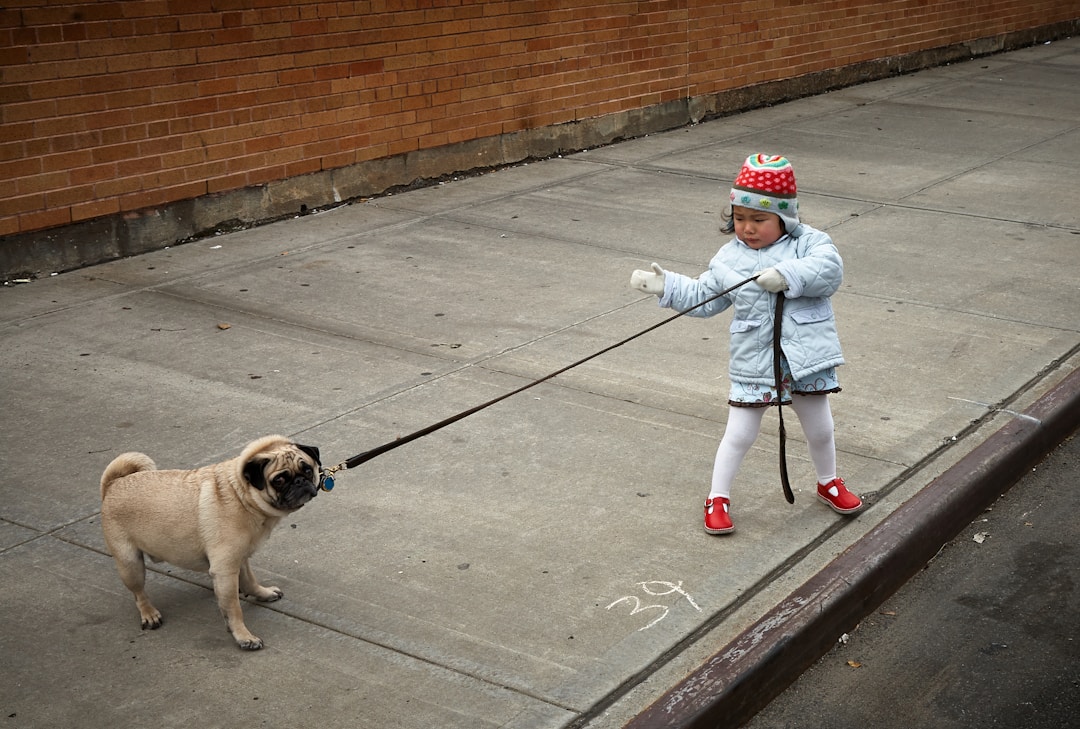Choosing to welcome a pet into your house can be a great new addition to your family. A furry friend can offer companionship and encourage your kids to get outside and be more active. However, it is understandable to worry about how your child will react to an animal and what kind of impact it could have on your family’s wellbeing. Here are some behavioral signs to look out for in children in order to know for sure whether your child is ready for a pet.
Your child is comfortable around animals.

A great way to gauge whether your child is ready to have a pet is to expose them as much as possible to other animals. Take your kid to a dog park, petting zoo, or the neighbor’s house and assess their reaction to other people’s pets. While it is natural that your child may have some apprehension at first when approaching an animal, if your child reacts with fear then this may be a sign that they are still too young.
For first-time dog owners, investing in a durable harness and leash can be vital in training your child to be comfortable around your new pet. Browse a wide selection of dog accessories and find the perfect dog harness fit for your pup. The latest in Joyride Harness ruffwear includes dog harnesses that make exposure training a breeze.
Dog harnesses are equipped with adjustable straps for a secure fit for animals of all sizes and breeds. Always ensure your dog is secure at your side with a high-quality dog harness, essential for taking your dog on car rides or on your daily walks with fellow dog friends. Joyride harnesses even have an adjustable chest strap for your dog’s comfort, fitting both small dogs and large dogs. It’s important to not get discouraged if your child has a hard time adjusting to your new family member at first, the exposure process can take a lot of patience and caution.
Your child is capable of doing tasks alone.

Another great way to gauge whether your child is ready to have a pet is by giving them smaller tasks around the house. By doing this you will prepare your child for the additional level of maturity and independence it takes to be a full-time pet owner. If your child can handle daily routine tasks such as brushing their teeth and cleaning the dishes on their own without a constant reminder, then this could be a positive sign that your kid is up to the task of helping to take care of a pet.
Children can also be unaware of when an animal needs their space. They may want to jump on them, poke them, or try to get them to play when they don’t want to. So, it’s important to educate your kid on how to assess an animal’s behavioral cues.
Your child is eager to help with some extra responsibility.

You can’t bear the burden of taking care of a new puppy all by yourself, which is why it’s important to make your child aware of all the extra tasks that an animal comes with. While your child may be excited about the prospect of getting a new pup or kitten, they can also be unaware of the added responsibilities such as exercising, feeding, and cleaning up after their pet.
You may even be able to find a range of youth program groups in your area that meet up to help inform and prepare kids for a pet. These youth group activities can include side-by-side training with animals, educational sessions, as well as a great opportunity for parents to exchange tips and tricks with other families that are also integrating a pet into their house for the first time.
There are also a range of different training activities that you can try on your own at home that are also fun for your child to engage with. Make training a fun game or design a chart of tasks that outlines the responsibilities that each family member gets a turn completing every day.











